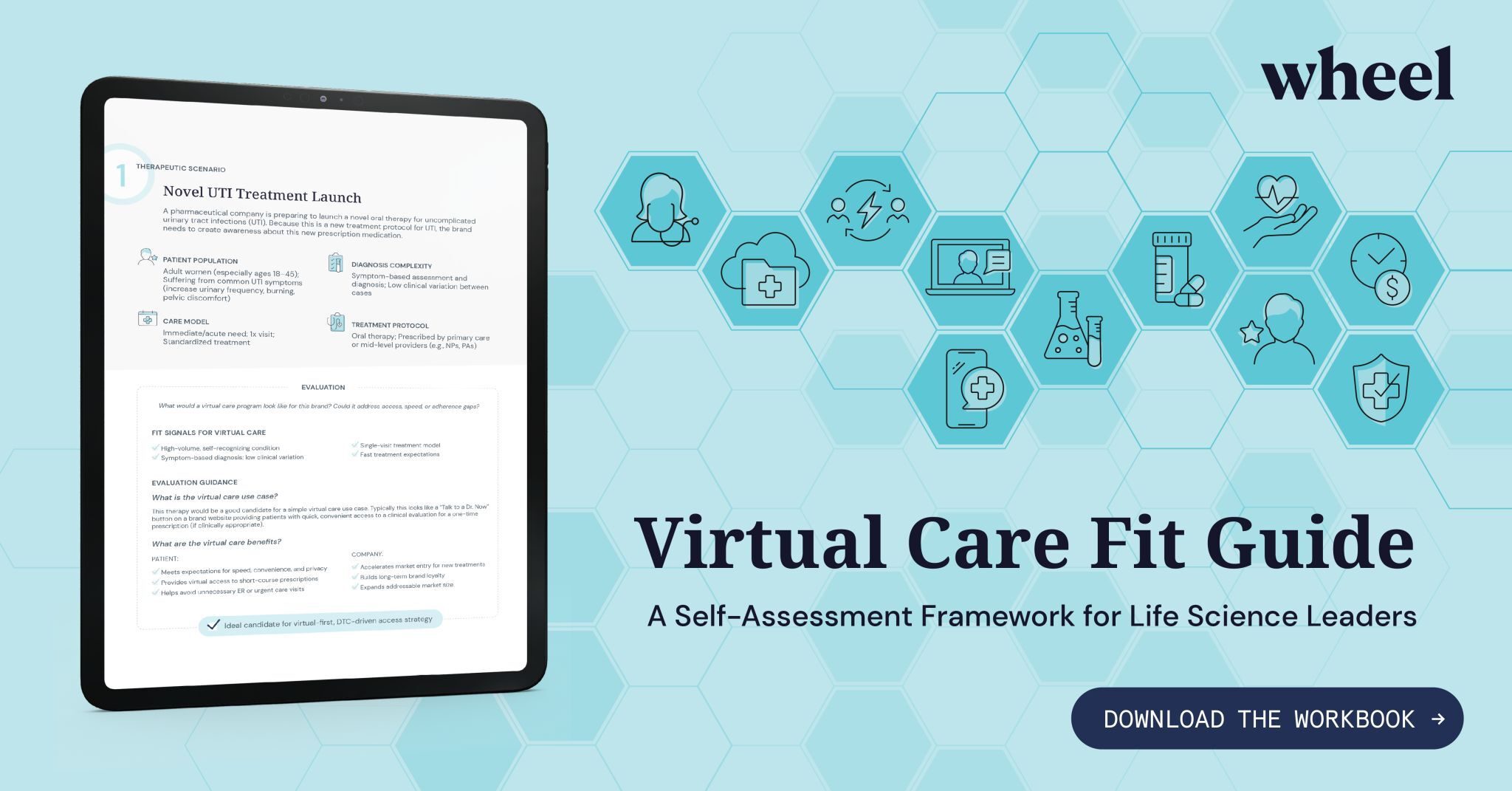Fierce Pharma Week 2025: 5 Takeaways on Virtual Care, DTP Commercialization, and Patient Engagement

At Fierce Pharma Week 2025, one theme was unmistakable: pharma’s future depends on how quickly it can adapt to digital-first patients. Across panels and hallways, the conversation kept coming back to the same question: how do life sciences companies evolve from transactional access models to patient-centric ecosystems that build trust, engagement, and outcomes?
For those focused on DTP virtual care, patient support programs (PSPs), and new virtual care commercialization models, the event delivered clear lessons. Here are the top takeaways.
1. Patients are driving the shift to digital-first access
The keynote on “AI as a Lifeline” underscored a reality the industry can’t ignore: patients are already turning to digital tools to research, self-diagnose, and guide their care.
“We will find it on our own if you don’t provide it.”
For pharma brands, this means “wait and see” is no longer viable. If a patient can’t access treatment quickly, they’ll look elsewhere. Virtual care infrastructure—integrated into DTC and DTP pathways—creates a compliant way to close the gap between symptom recognition and therapy initiation.
2. From access to impact: ecosystems matter more than campaigns
Several sessions highlighted a growing mindset shift. Pharma has historically measured success by prescriptions written or filled. But pharma patient engagement today must extend across the entire journey, from awareness and affordability, through diagnosis, to adherence and long-term outcomes.
That requires ecosystems, not point solutions. By linking DTP virtual care with PSP integration, brands can create friction-free journeys where patients are onboarded, supported, and retained, all while capturing insights that inform future commercialization strategies.
3. Commercialization is evolving into hybrid, omnichannel models
COVID proved that prescription volume can rise even without field sales forces. Fierce Pharma Week discussions emphasized that modern virtual care commercialization requires a balance: omnichannel engagement for HCPs and direct-to-patient care pathways for consumers.
Pharma doesn’t need to abandon traditional channels. But it does need to supplement them with direct-to-patient virtual care that accelerates speed-to-therapy and expands reach for the treatments that are ‘best fit’ for virtual care. The winners will be those who embrace an “and, not or” approach to digital and in-person access strategies.
Download our Virtual Care Fit Guide to evaluate your portfolio for the therapies most appropriate for digital care and access.

4. Personalization must go beyond marketing copy
Speakers repeatedly warned that true personalization isn’t about tailoring ad creative—it’s about tailoring the patient experience itself. Regional, cultural, and socioeconomic realities impact everything from diagnosis to adherence. A one-size-fits-all campaign no longer works.
With the right virtual care infrastructure, pharma can deliver localized engagement, personalized affordability support, and care pathways that reflect patient realities. This is where digital-first ecosystems can close equity gaps and build brand trust.
5. Compliance is the foundation of trust
As the FDA and FTC scrutinize online prescribing, compliance dominated conversations at Fierce. Industry leaders stressed that DTP virtual care models must be designed with clinical independence, audit-ready processes, and clear guardrails.
Compliance is more than risk mitigation, it’s the foundation for trust. Patients who see clear, evidence-based care protocols are more likely to start and stay on therapy, driving both adherence and lifetime value.
Wheel at Fierce Pharma Week
In two sessions, Wheel executives added perspective on how brands can evaluate therapy fit for virtual-first commercialization and how DTC evolves into true direct-to-patient engagement. The conversations reinforced that virtual care must be evidence-based, compliant, and longitudinal rather than just another access point.
Here are a few key moments:
Redefining Point of Care in Pharma: Insights from Michelle Monaco
Michelle Monaco, Wheel SVP and Head of Product, on the definition of “point of care” today and what that means for pharma.
Virtual Care as “And, Not Or” in Commercialization: Insights from Chris Moose
Chris Moose, Wheel VP of Life Sciences, on why virtual care should be an ‘and’, not an ‘or’ within commercialization models.
Final word: Pharma’s next competitive edge is virtual care infrastructure
If there was one conclusion from Fierce Pharma Week 2025, it’s that the industry is moving from campaigns to infrastructure. More than a future trend, virtual care commercialization is the operating model that will determine which brands succeed in an era of consumer-driven healthcare.
Patients already expect immediacy, affordability, and continuity. The brands that deliver through integrated DTP virtual care pathways and patient-first ecosystems won’t just close access gaps. They’ll define the new standard for pharma.
Ready to explore how virtual care infrastructure can transform your commercialization strategy?
Learn how to launch compliant, scalable DTP programs that drive engagement, adherence, and brand loyalty.